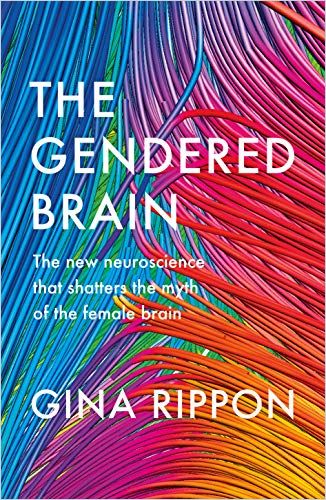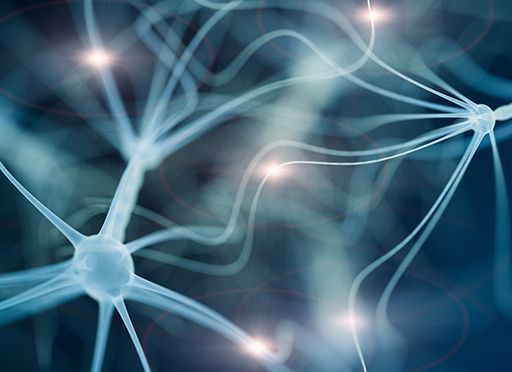Cognitive neuroscientist Gina Rippon, PhD presents a wealth of scientific data to demonstrate the minimal innate differences between men and women and the enduring power of social conditioning.

Escaping Gender Stereotypes
Cognitive neuroscientist Gina Rippon, PhD – a researcher and teacher at the Aston Brain Center at Aston University in Birmingham, England – details how nurture rather than nature determines gendered behaviors. She separates fact from stubborn fiction about any biological basis for gender-based differences in intelligence or capabilities.
Different Brains
As women in the 19th century demanded education, property rights and access to political power, scientists got busy proving why they should never have them. They sought proof that nature dictated the inferiority of the female brain. Scientists claimed that educating women might lead to the depletion of their reproductive abilities.
The visualization of the brain, appearing to make the invisible visible, was really the technology trigger that brought neuroscience firmly into the public arena.Gina Rippon
The brain organization theory claims that, although male and female levels of testosterone are similar at birth, a surge of testosterone in boys at five weeks of gestation is responsible for the penis and a male brain. British clinical psychologist Simon Baron-Cohen asserts this leads to male brain behavioral characteristics, such as a preference for rules-based interactions as opposed to more empathic interaction that he claims indicate a female brain. Sex-associated hormones determine the physical differences between the genders, but it is unlikely they organize the brain in meaningful ways, Rippon counters.
Social Complementarity
Darwinian theory framed human behavior in terms of mating and sexual selection in which dominant, smarter and aggressive males conquered in the larger world, while submissive, loving and patient women made the best homes. Science embraced social complementarity based on characteristics gender determined, but this view has no factual basis. The myth survives today as evolutionary psychology.
Myths
Researchers design experiments to find differences between the sexes, Rippon reveals, and those who don’t find what they seek rarely submit their work for publication or publications reject them.
When researchers “prime” study participants by highlighting general stereotypes before the test, the scientists are influencing the results. Participants cognizant of stereotypes sometimes conform to them unconsciously.
Self-help and pop psychology steep the public in pseudoscience that props up status-quo gender beliefs. That women’s brain hemispheres are more integrated than men’s or that humans use only 10% of their brain capacity are myths.
Plasticity
Your brain absorbs and processes enormous amounts of data.
Our brain navigates us through the world via a combination of predictive-texting-like skills and high-end satnav guidance.Gina Rippon
It excels at predicting, but it can be wrong or tricked. The brain’s shorthand leads to stereotyping – expectations based on cultural norms or experiences rather than on data. AI-based machine learning works in a way similar to the brain by interacting with the world and teaching itself the rules and patterns it extracts. If the data are sexist and racist, that’s what AI systems learn and magnify.
The “Social Brain”
Your brain juggles your preferences during interactions with the world and predicts the behaviors of other people in your various social groups. This produces self-identity, reinforced by positive feedback. If the feedback is negative, your self-esteem takes a hit. Stereotypes, Rippon points out, play into your sense of self and how you believe that “someone like you” should act.
Being excluded or rated as boring can hurt as much as an electric shock.
If you are in a group that others perceive negatively, you may overthink your problems under the added stress of being constantly judged.
Socialization and Stereotypes
If females are more emotionally sensitive than males, that is not an inborn trait, Rippon asserts. There are no sex-based differences in newborns regarding visual development. Scientists once thought babies developed movement skills before they built social proficiencies – but now believe the opposite.
Girls who think Lego is for boys are slower at construction-based tasks.Gina Rippon
By age four, children absorb and conform to social expectations based on gender. Confirmation bias – where the brain selectively notices information that supports its stereotypes – makes stereotypes resistant to change. Stereotyping information contains rules about which group you belong to and how members of that group act. These beliefs become part of your core identity.
Your Sociometer
Most people are aware of the STEM (science, technology, engineering and math) gender gap. Parents tend to encourage their sons to study math more than they encourage their daughters to do so.
There is a clear message in our gendered waters that males have what it takes to be successful scientists and females don’t.Gina Rippon
Rippon explains why men consistently score higher for self-esteem than women. Facing too much threat, you alter or inhibit your behavior to avoid it. A sensitive sociometer might make you choose increasingly inhibitory decisions to avoid threats to your self-esteem. Your sociometer proves more sensitive to potential negative external factors than to potential positives. Women tend to be more self-critical and self-blaming than men are and fear disapproval more than men. The imperative to avoid social rejection feeds women’s reluctance to pursue STEM careers.
Not Necessarily Binary
Physical manifestations of sex aren’t necessarily binary. Some people have mixed XY and XX chromosome sets. Hormones fluctuate in response to external social circumstances in men and women. The more closely science examines sexual differences, the less clear it becomes that two categories of people based on sex exist.
Brains reflect the lives they have lived, not just the sex of their owners. Gina Rippon
Having positive role models and support systems and imagining themselves in powerful positions, advises Rippon, help girls build resilience against esteem-depleting stereotypes.
Science-Based Conclusions
Gina Rippon, PhD, emphasizes data-drawn conclusions and the provable. She avoids metaphorical conclusions and bases her arguments on scientific facts and how those facts undermine enduring gender stereotypes. Rippon’s writing is primarily technical, but mostly accessible and entertaining. She’s writing for laypeople who, like her, prefer to understand the science underlying their knowledge. If you have an interest in the evolution of gender stereotypes, whether gender causes brain differences and how women can resist social stereotypes, Rippon’s book will fascinate you.
Gina Rippon, PhD, also wrote Gender and Our Brains. Parallel works include Delusions of Gender by Cordelia Fine and Maria Brendel; and Gender Mosaic by Lub Vikhanski.











